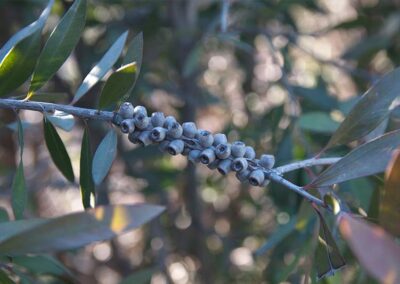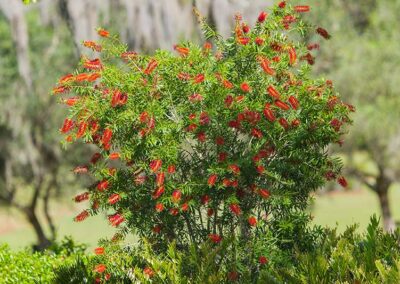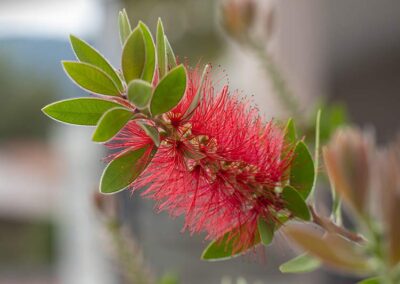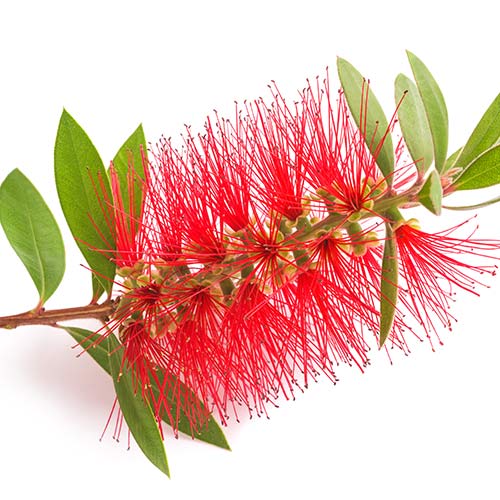
Bottlebrush Tree

Pollen Type: Tree
Cross-Reactivity: None
HS Allergy Extract: Bottlebrush Tree
Family: Myrtaceae
Genus/Species: Callistemon citrinus
Common Names: Bottle Brush, Scarlet Bottlebrush, Lemon Bottlebrush, Red Bottlebrush
Distribution: Warm, temperate southern states like Florida & California.
Locations: A beautiful commonly cultivated that is successfully grown in the Pacific Coast states particularly California.
Pollination Method: Wind-pollinated
Pollinating Period: April & May
Description: The Bottlebrush Tree is an evergreen shrub native to Australia that grows up to 20′ tall but is commonly 3′-10′ in height and width. Its bark is hard, fibrous, or papery; young growth is covered in soft, silky hairs. Its leaves are arranged alternately and are hard, flat, and narrow egg-shaped with a pointed, non-sharp end. They measure 1″-4″ long and 0.2″-1″ wide, with 7-26 branching veins visible on both sides and numerous distinct oil glands. Its flowering cylindrical spikes resemble bottle brushes. They are 2″-3″ in diameter and 2″-4″ long and can contain up to 80 individual red flowers. The petals measure 0.15″-0.23″ long and fall off as the flower ages. Each flower contains 30-45 stamens with red filaments and purple anthers. Flowering usually occurs in November and December but can happen in most months of the year. Bottlebrushes self-pollinate as they bloom, producing small woody, cup-shaped capsules that measure 0.2″-0.3″ long and about 0.3″ inches wide. These fruiting capsules are arranged in cylindrical clusters along the stem and remain unopened until the plant, or portion of the plant they grow on, dies.




